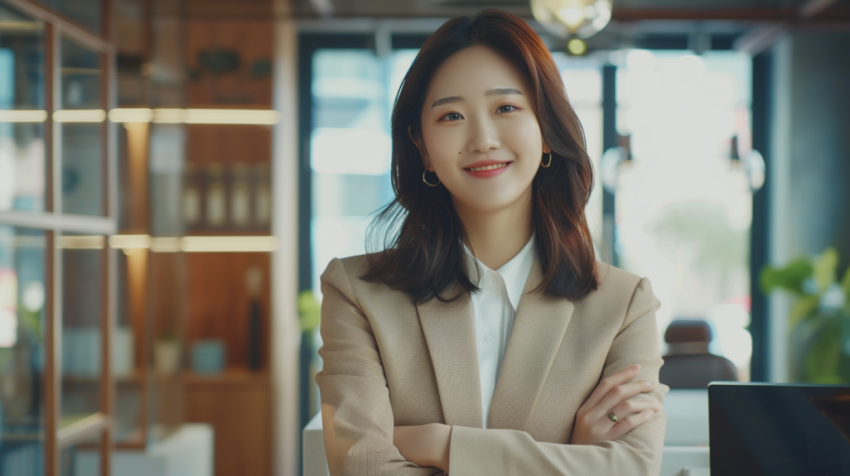











The Evolving Office: From Paper-Pushing to Agile Workspaces
-
The office, a space dedicated to work and business activities, has undergone a remarkable transformation throughout history. It has evolved from a simple setting for administrative tasks to a complex ecosystem that reflects changing work styles, technological advancements, and evolving employee expectations. This article explores the fascinating journey of the office, examining its historical roots, key design trends, the impact of technology, and the forces that are shaping its future.
Early Offices and the Rise of Bureaucracy
The concept of a dedicated workspace emerged alongside the growth of organized business and government administration. In the late 19th and early 20th centuries, the rise of large corporations and bureaucratic structures fueled the development of the modern office. The Larkin Administration Building, designed by Frank Lloyd Wright in 1906, is often cited as a pioneering example of modern office design, featuring an open plan and innovative features like air conditioning. Early offices were often characterized by rigid layouts, with rows of desks arranged in large, open rooms known as bullpens. These layouts reflected the principles of scientific management, which emphasized efficiency and close supervision of workers.
The Mid-20th Century: Cubicles and Corporate Culture
The mid-20th century witnessed the rise of the cubicle, a semi-enclosed workspace that offered a degree of privacy and personalization. The Action Office system, developed by Robert Propst for Herman Miller in the 1960s, aimed to create a more flexible and adaptable office environment. However, it often resulted in the creation of cubicle farms, vast expanses of uniform workspaces that were criticized for being isolating and dehumanizing. During this period, the office also became a reflection of corporate culture and identity, with companies using design to communicate their brand values and create a sense of belonging among employees.
The Late 20th Century: Technology and the Open Plan
The advent of personal computers and the internet revolutionized the way people worked, leading to new approaches to office design. Computers reduced the need for paper-based filing and storage, freeing up space. The internet enabled remote work and communication, blurring the boundaries of the traditional office. The open-plan office, with its emphasis on collaboration and communication, gained popularity. Open plans often featured low or no partitions between workstations, creating a sense of openness and transparency. Hot-desking, where employees do not have assigned desks but choose a workspace on a first-come, first-served basis, emerged as a way to optimize space utilization and accommodate flexible work arrangements.
The 21st Century: Collaboration, Well-being, and Sustainability
In the 21st century, office design is increasingly focused on fostering collaboration, promoting employee well-being, and embracing sustainability. Modern offices feature a variety of collaborative spaces, such as breakout areas, huddle rooms, and informal meeting areas, designed to encourage interaction and teamwork. Companies are recognizing the importance of employee well-being and are incorporating features like natural light, ergonomic furniture, and biophilic design (bringing nature into the office) to create healthier and more inspiring work environments. Activity-based working (ABW) is a design philosophy that provides employees with a choice of work settings suited to different tasks, such as focused work, collaboration, or learning. The agile workplace is designed to be flexible, adaptable, and responsive to changing business needs. It often incorporates features like modular furniture, movable walls, and technology that supports remote work. Green building practices, such as using sustainable materials, reducing energy consumption, and improving indoor air quality, are becoming increasingly common in office design.
The Impact of Remote Work and Hybrid Work Models
The COVID-19 pandemic accelerated the adoption of remote work, leading to a fundamental rethinking of the role and design of the office. Many companies have embraced remote work as a permanent option for some or all of their employees. Hybrid work models, which combine remote work with in-office work, are becoming increasingly popular. These models require offices to be more flexible and adaptable to accommodate fluctuating numbers of on-site employees. The office is evolving into a hub for collaboration, social interaction, and company culture, rather than just a place to perform individual tasks.
The Future of the Office: Technology, Flexibility, and Human-Centric Design
The future of the office is likely to be shaped by factors such as technology, sustainability, and the evolving needs of employees. Smart office technology, such as sensors, automation, and artificial intelligence, will play an increasingly important role in optimizing space utilization, improving employee experience, and enhancing building performance. The metaverse and virtual reality technologies have the potential to create immersive virtual office environments, offering new possibilities for remote collaboration and communication. The focus on employee well-being and experience will continue to drive office design, with an emphasis on creating spaces that are not only functional but also inspiring, comfortable, and supportive of human needs. There will be a continued emphasis on creating flexible and adaptable workspaces that can accommodate a variety of work styles and changing business needs. This may involve more modular furniture, reconfigurable spaces, and a greater emphasis on technology that supports both in-office and remote work.
The Office as a Strategic Asset
The office is no longer just a place to work; it is becoming a strategic asset that can help companies attract and retain talent, foster innovation, and build a strong corporate culture. Companies are realizing that the office environment can have a significant impact on employee productivity, engagement, and overall well-being. By investing in thoughtful office design and creating spaces that support the needs of their employees, companies can create a competitive advantage in the marketplace. The office of the future will be more than just a physical space; it will be an ecosystem that supports a variety of work styles, fosters a sense of community, and promotes the well-being of its occupants.
Conclusion
The office has undergone a dramatic transformation over the past century, evolving from a rigid, hierarchical environment to a more dynamic, flexible, and human-centric space. As technology continues to advance and the nature of work continues to change, the office will undoubtedly continue to evolve. The future of the office is likely to be characterized by a blend of physical and virtual spaces, a focus on employee well-being and experience, and a greater emphasis on sustainability and flexibility. The office of the future will be a strategic asset that helps companies attract talent, foster innovation, and build a strong and resilient organizational culture.
office design, office design trends, future of work, workplace design, modern office design, office layout, open plan office, cubicle design, activity-based working, agile workplace, hybrid work, remote work, flexible workspace, smart office, office technology, sustainable office design, biophilic design, office ergonomics, office furniture, office lighting, office space planning, hot-desking, coworking, collaborative workspace, office well-being, employee experience, office culture, future of the office, office design history, workplace strategy, workplace productivity, office design inspiration, office design ideas, office design software, office design services, office design and build, best office designs, office design awards, office design for small spaces, office design for startups, office design for large companies, office design trends 2023, office design trends 2024, office design case studies, office design research, office design impact on productivity, office design impact on employee well-being, office design for creativity, office design for collaboration, office design for focus, office design for communication, office design for sustainability.

